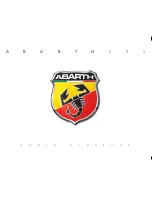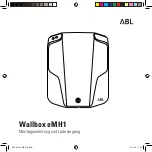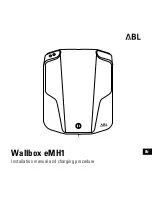
Generally, these are volatile data and will not be
stored beyond the period of operation but will only
be processed within the vehicle itself. Control
units, vehicle keys for example, o en contain data
memories. Their use permits the temporary or per-
manent documentation of technical information
about the vehicle's operating state, component
loads, maintenance requirements and technical
events or malfunctions.
Depending on the technical equipment, the follow-
ing data are stored:
R
Operating status of system components, such
as ll levels, tire pressure or battery status
R
Malfunctions or faults in important system
components, such as lights or brakes
R
System reactions in special driving situations,
such as airbag deployment or the intervention
of stability control systems
R
Information on events in which the vehicle is
damaged
In certain cases, it may be required to store data
that would have otherwise been temporary. This
may be the case if the vehicle has detected a mal-
function, for example.
If you use services, such as repair services and
maintenance work, stored operational data as well
as the vehicle identi cation number can be read
out and used. They can be read out by service net-
work employees, such as workshops and manufac-
turers or third parties, such as breakdown serv-
ices. The same is true in the case of warranty
claims and quality assurance measures.
In general, the readout is performed via the legally
prescribed port for the diagnostics connection in
the vehicle. The operational data that are read out
document technical states of the vehicle or of indi-
vidual components and assist in the diagnosis of
malfunctions, compliance with warranty obliga-
tions and quality improvement. To that end, these
data, in particular information about component
loads, technical events, malfunctions and other
malfunctions may be transmitted along with the
vehicle identi cation number to the manufacturer.
In addition, the manufacturer is subject to product
liability. For this reason, the manufacturer also
uses operational data from the vehicle, for exam-
ple, for recalls. These data can also be used to
examine the customer's warranty and guarantee
claims.
Malfunction memories in the vehicle can be reset
by a service outlet or at your request as part of
repair or maintenance work.
Conv
Convenience and infot
enience and infotainment functions
ainment functions
You can store convenience settings and individual
settings in the vehicle and change or reset them at
any time.
Depending on the vehicle equipment, this includes
the following settings, for example:
R
Seat and steering wheel positions
R
Suspension and climate control settings
R
Individual settings, such as interior lighting
Depending on the selected equipment, you can
import data into vehicle infotainment functions
yourself.
Depending on the vehicle equipment, this includes
the following data, for example:
R
Multimedia data, such as music, lms or pho-
tos for playback in an integrated multimedia
system
R
Address book data for use in an integrated
hands-free system or an integrated navigation
system
R
Entered navigation destinations
R
Data on the use of Internet services
These data for convenience and infotainment func-
tions may be saved locally in the vehicle or they
may be located on a device which you have con-
nected to the vehicle, such as a smartphone, USB
ash drive or MP3 player. If you have entered these
data yourself, you can delete them at any time.
This data is transmitted from the vehicle to third
parties only at your request. This applies, in partic-
ular, when you use online services in accordance
with the settings that you have selected.
Smar
Smartphone int
tphone integr
egration (e.g. Andr
ation (e.g. Android A
oid Aut
uto or
o or
Apple CarPlay
Apple CarPlay
®
®
))
If your vehicle is equipped appropriately, you can
connect your smartphone or another mobile end
device to the vehicle. You can then control them by
means of the control elements integrated in the
vehicle. The smartphone's picture and sound can
be output via the multimedia system. Simultane-
ously, speci c items of information are transferred
to your smartphone. Depending on the type of
integration, this includes position data, day/night
mode and other general vehicle statuses. For more
information, please consult the vehicle Operating
Instructions/infotainment system.
This integration allows the use of selected smart-
phone apps, such as navigation or music player
apps. There is no additional interaction between
General notes
29
29
















































